Gardens of Mexico

Travel writer and photographer Andrea Moreno recounts her visit to some of Mexico's most beautiful gardens.
“Mexico’s gardens are not well known,” our guide Sonia Waldo says, as we walk through Chapultepec´s Botanical Garden in the heart of Mexico City. “I’ve worked as a tour guide for 30 years, and it’s the first time people have come to visit the country’s plants and gardens. Mexico’s plants are very important. They’re used for food, medicine, rituals. They’re a way to understand the country’s past.” Chapultepec, meaning ‘the place of the grasshoppers’ in the Nahuatl language, was the first Botanical Garden in Mexico. It was created by the philosopher and ruler Nezahualcóyotl in the Pre-Columbian times, who ordered that exotic plants should be brought from all over the country.
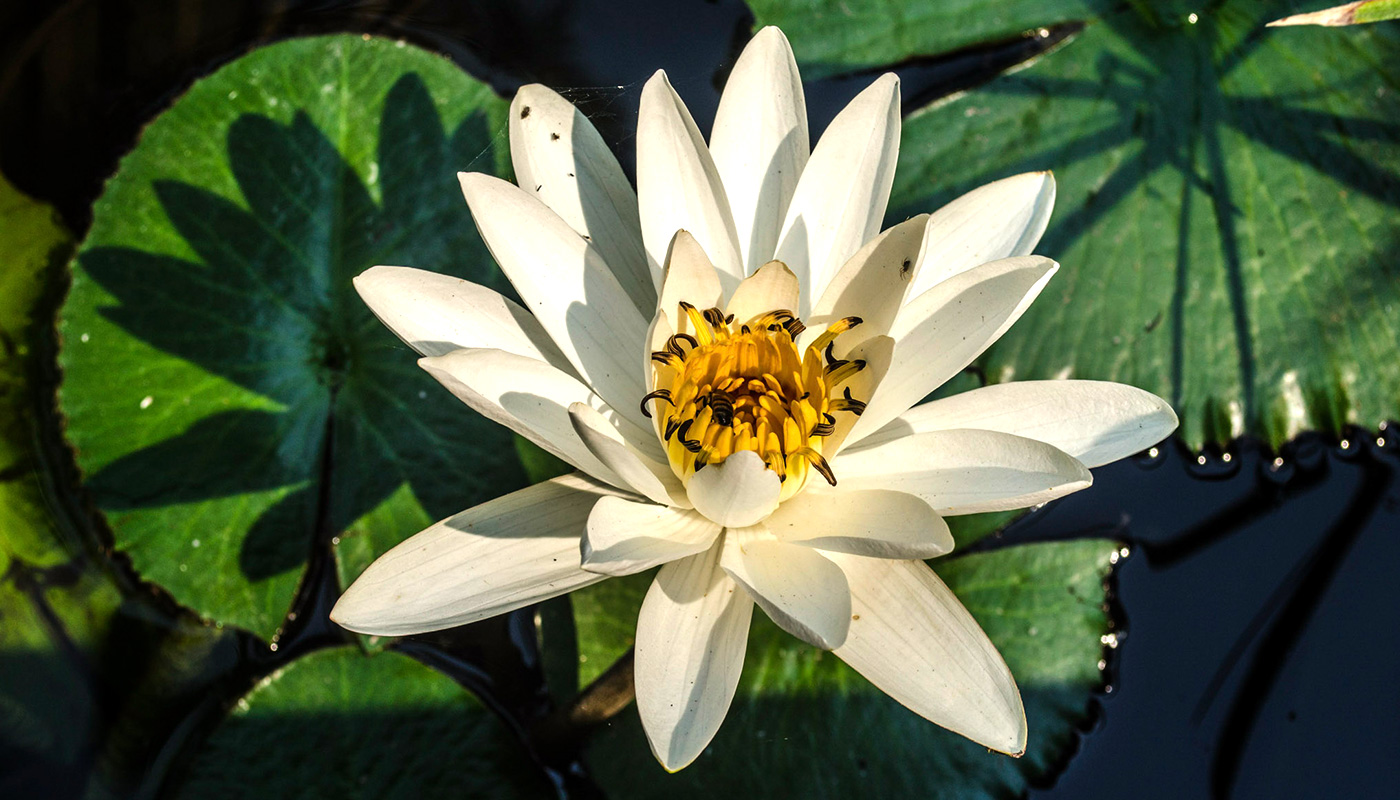
Right next to the hustle and bustle of Reforma Avenue, the garden’s sections contain cactus, orchids and quiet refuges for bees and grasshoppers. Endemic herbs are also displayed here, such as epazote, used for flavouring, and achiote (annatto), used for migraines and food colouring. There’s also a collection of chilli plants and iconic Mexican flowers, like the Calla lilies. “Plants are very important for us in Mexico, from even before the Aztecs,” Waldo explains. “Ancient civilizations used plants and had very advanced knowledge of medicine with herbs.”
Chapultepec is the first stop on a brand new trip exploring the gardens and natural wonders of central Mexico, taking in not only Mexico City but four of the surrounding states. Mexico is famously the land of cactus, but as well as gardens filled with cactus in all shapes and sizes, we discover Surrealist fairytale-like sculptures tucked away in the jungle, peaceful canalways with smiley alien-like creatures, the largest garden in the world and more. It´s a whole different side to the Mexico, a country more famous for beaches, tequila and pyramids.
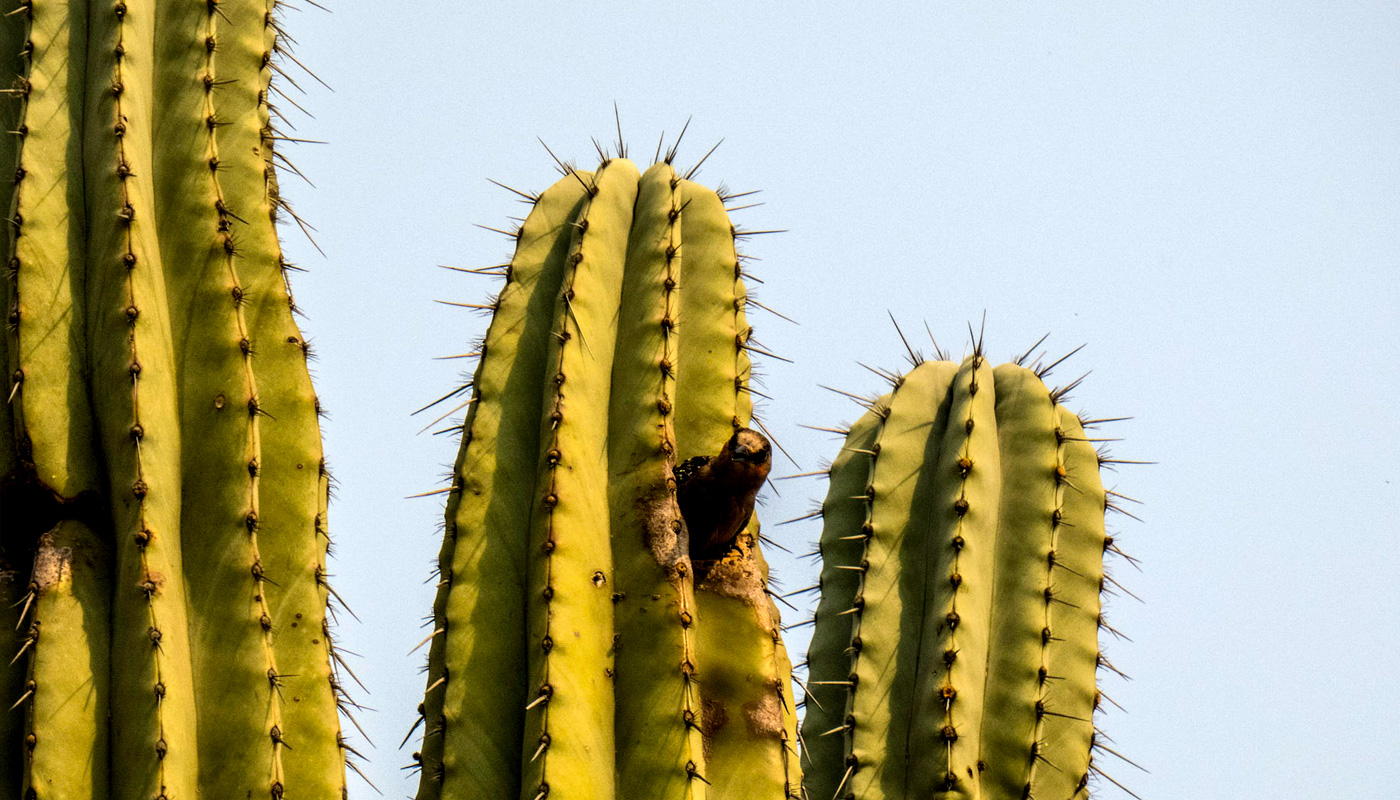
On the second morning, we arrive early at the Autonomous National University of Mexico (UNAM) in the south of Mexico City, close to the Olympic Stadium. Besides a few runners and students, we have the place entirely for ourselves, walking pathways formed from dark volcanic rock. 1600 plant species grow that grow in Mexico’s desert, jungle and forest are here. 20 feet long agave structures with spikey tips give the scene a prehistoric feel. Lizards sunbathe on the tall walls of the ‘fencepost cactus’ and red Mexican sparrows fly over flowers catching bugs. A tarantula blends with the dark rocks, and we see hummingbirds feeding on agave flowers. At the Plant Adoption Centre, signs offer the chance for people to sign up to ‘adopt’ one of the 300 species at risk in Mexico.
After a short drive and a stop in Xochimilco’s markets to eat handmade quesadillas, we rush through the market’s picturesque halls, ornamented with piñatas and handcrafts, eyeing beautiful produce, all of it freshly grown in Xochimilco: courgette flowers, corncobs, chillies, cilantro, tomatoes…

We arrive at La Santisima neighbourhood to access Xochimilco´s canals. Away from the blasting Mariachi trumpets and the tequila-seeking tourists, we immerse ourselves into serene waterways. White herons cautiously observe us from the distance, as we float on an engineless boat, accompanied only by the sound of the trees moving with the breeze. From here, it’s impossible to see or feel the ‘concrete jungle’ of Mexico City, the fifth most populous city in the world, that we’re so close to.
We’re welcomed by a man with a proud grin on his face, as we step onto a patch of land surrounded by water. “Everybody has seen the tourist area and they think that’s the last remaining part of Xochimilco,” Dionisio Eslava tells us. “Very few people come here.”
Dionisio is the President of Umbral Axochiatl, an association working to revive one of the oldest types of agriculture in the world. Crops have been grown here since the pre-Columbian times in floating beds of soil called ‘chinampas’. Xochimilcans and later Aztecs used this form of agriculture to feed the capital’s empire of 300,000 inhabitants. A system of 20,000 chinampas were reduced over time to just the 10 per cent that remain today, with locals and some Mexico City restaurants now making use of the organic produce. “The way of preserving an ecosystem is to put it to work, using our ancestors’ knowledge and creating new science,” Dionisio explains. “In the future, young people will be dealing with difficult times: climate change and economic challenges. Chinampas provide jobs, better food, better water, air and oxygen. By preserving chinampas, we preserve our culture and take control of our territory, instead of migrating to other places.”
The canals need the ‘chinampas’ to help clean the water and the ‘chinampas’ need the water to survive. A previously well-balanced eco-system was disturbed by the introduction of exotic plants that invaded the canals, suppressing the oxygen in the water. Development, pollution from Mexico City and the introduction of the African tilapia have all also been contributing factors that threatened the existence of the most iconic animal in Xochimilco, the Ambystoma Mexicanum or axolotl, an alien-like amphibian with an undeniably smiley face. “I find them very interesting and resilient,” says biologist Karina Molina, who is working to save the axolotl and rehabilitate the canals surrounding the chinampas. “Their tails and legs can grow back and they have tissue in their brain and heart that can regenerate.”
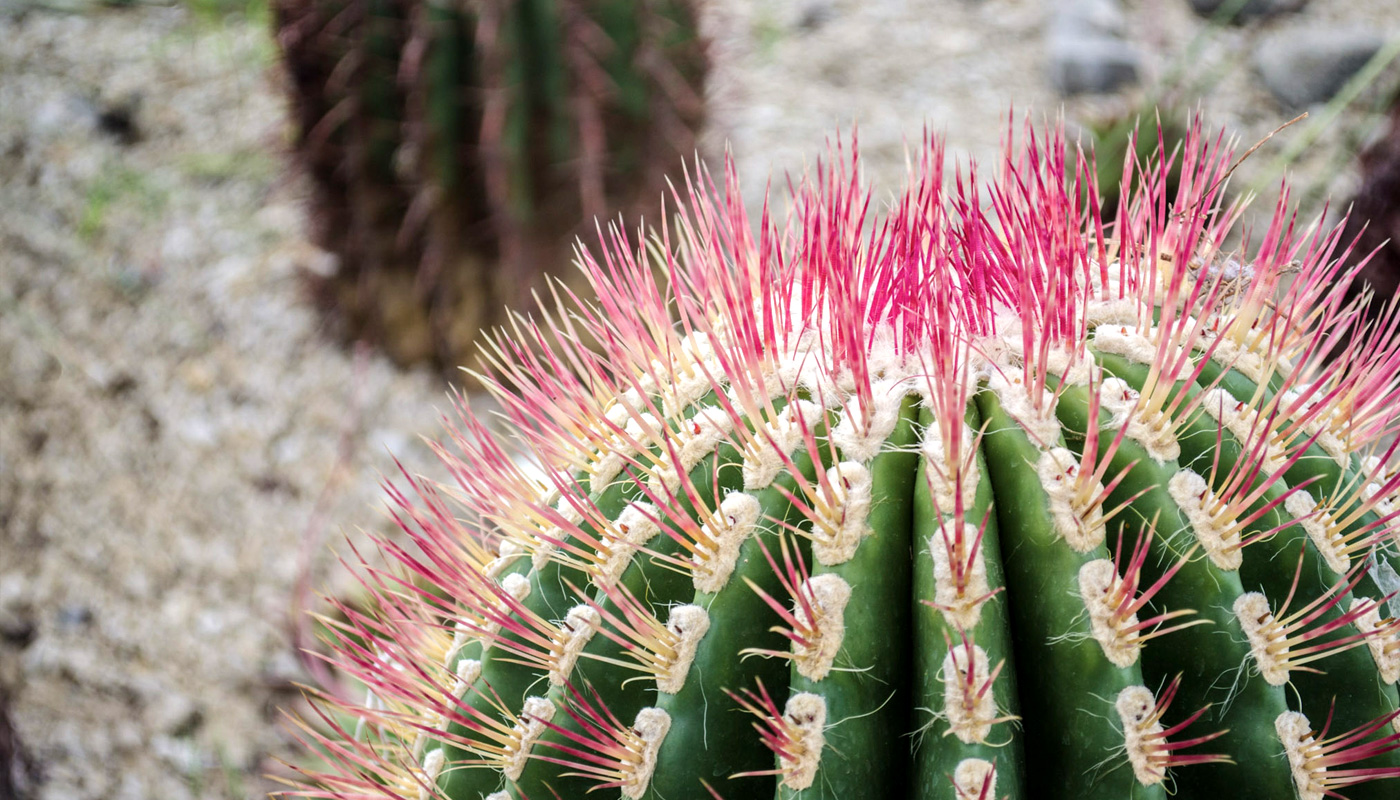
We drive north from Mexico City, passing colonial towns with colourful houses and cobblestone streets, making a stop in the Botanical Garden of Cadereyta, not far from the city of Querétaro. “It looks like a golf ball, right?” Oscar Zepeda, a guide at the gardens, asked us, showing us a little white ball on the ground. “It’s a mammillaria herrerae cactus. There are only 250 left in the wild. This little cactus just grows in one square kilometre, and it’s at risk because, out of all the places in Mexico, they needed to construct an aqueduct right over that kilometre,” he continues with frustration. “Our purpose with this garden is that people can become aware of the link between what people do and the impact it has on our ecosystem. The construction of an aqueduct wouldn´t be needed if we used our resources efficiently.”
Exploring the gardens, we walk next to towering órganos, chubby biznagas showing of their flowers and other large cactus with neon pink ‘tunas’ (cactus fruit) growing from them. We hike to the top of a hill through huge magueys and admire the forests of yucca mixtecana that contrast with the bright blue sky, the landscape giving a feeling of solitude and peace.
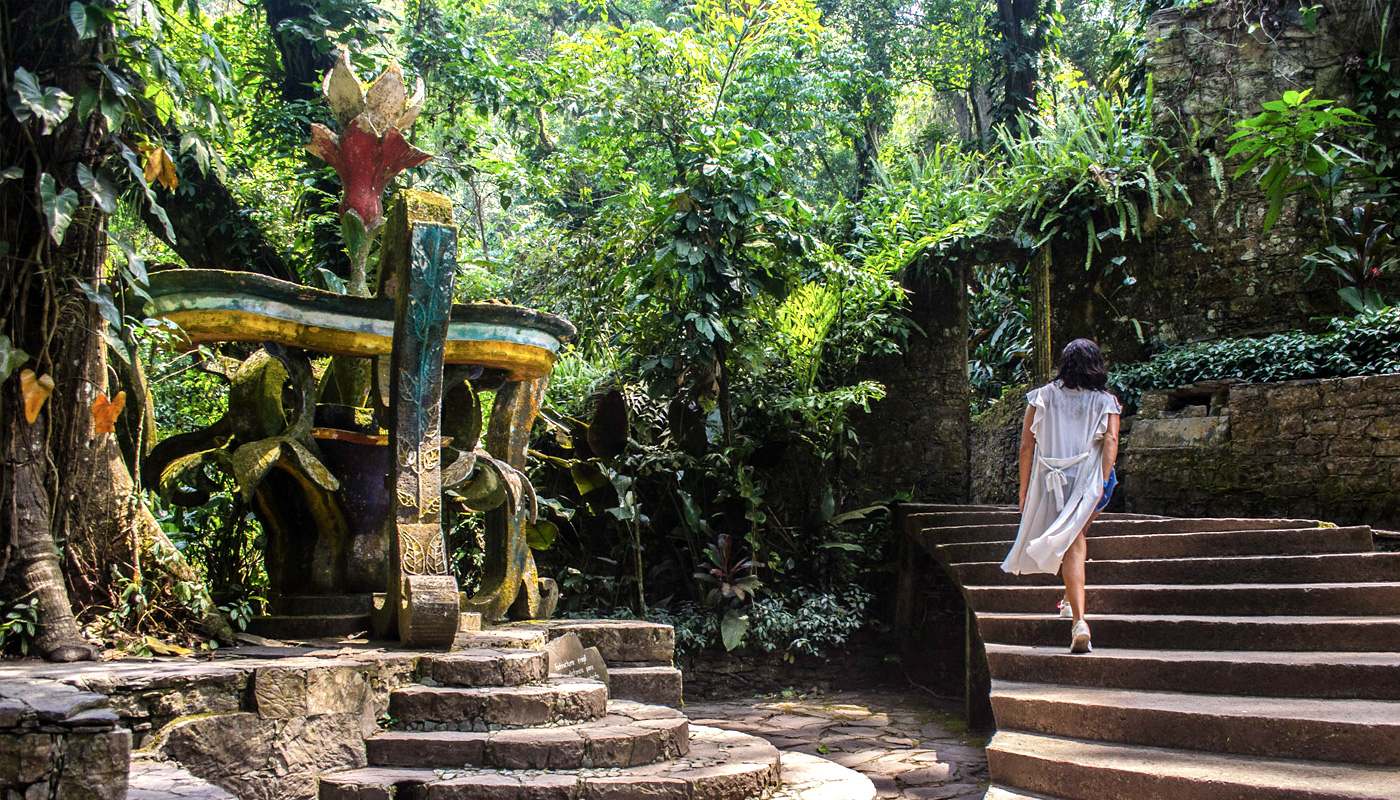
We move from Querétaro state into San Luis Potosi, witnessing the change of the landscape, moving from desert to the forests of the Sierra Gorda and into the humid heat of the town of Xilitla. We stay in ‘El Castillo’ (The Castle), the former home of Scottish Surrealist artist and poet Edward James. His house is filled with beautiful plants and art, including one of his dark, strange paintings, and a Leonora Carrington painting, The Daughter of the Minotaur, on one of the house’s walls.
In the artist’s former bedroom, named ‘Don Eduardo’, we sleep next to an elevated platform with a table and chair standing on it. From the windows, we can see the jungle in the valley where his Surrealist garden is located.
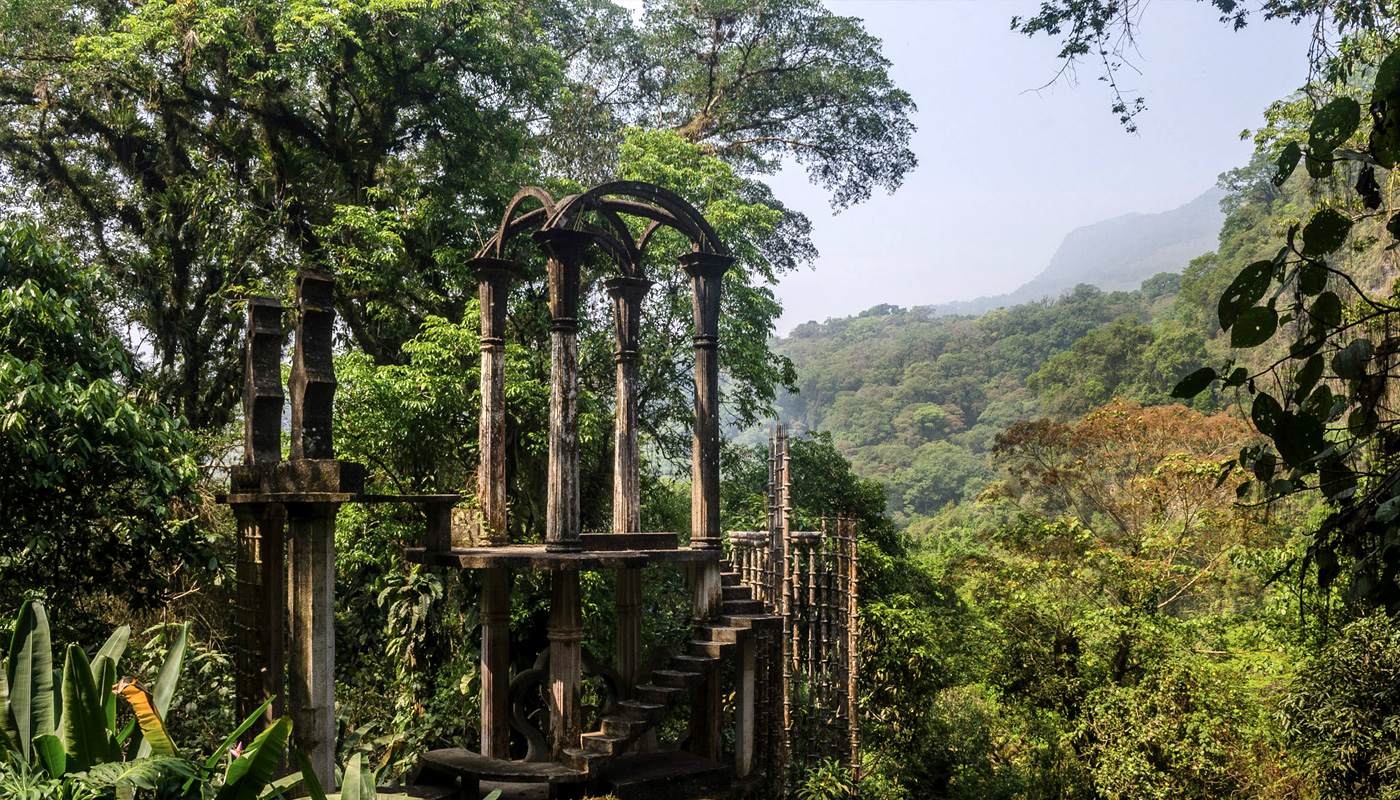
The wealthy sponsor of Salvador Dali, Leonora Carrington and René Magritte, James had a vision to create a garden with ‘wings’, a garden that is ‘alive’ and in a constant state of creation, never finished. The result, Las Pozas (The Pools), is like a labyrinth. Pathways lead to hidden structures that are blended into the jungle, sometimes overgrown with nature or with walls and steps coated in moss. We make our way up staircases that lead to nowhere, and pass large brightly coloured concrete orchids, before reaching reaching a gap in the jungle with waterfalls, bright blue morpho butterflies flying over natural rock pools that have been ornamented with concrete arches.. Elsewhere, we find tall Greek-style pillars, platforms with views out over the hillsides, and large structures that look like ancient temples.
Back in Mexico City, we visit Dolores Olmedo Museum, the former house of a wealthy businesswoman and mistress of Mexican artist Diego Rivera. The house contains the largest collection of works by the famous painter, as well as paintings by Frida Kahlo, Rivera’s wife, and other artworks. Peacocks strut around the gardens, showing off their feathers, while Xoloitzcuintles, a type of hairless Mexican dogs, rest under the shade of trees. There are 25 types of plants within the sunny grounds, too, some rare and endemic to the region, like the àrbol de la manita.
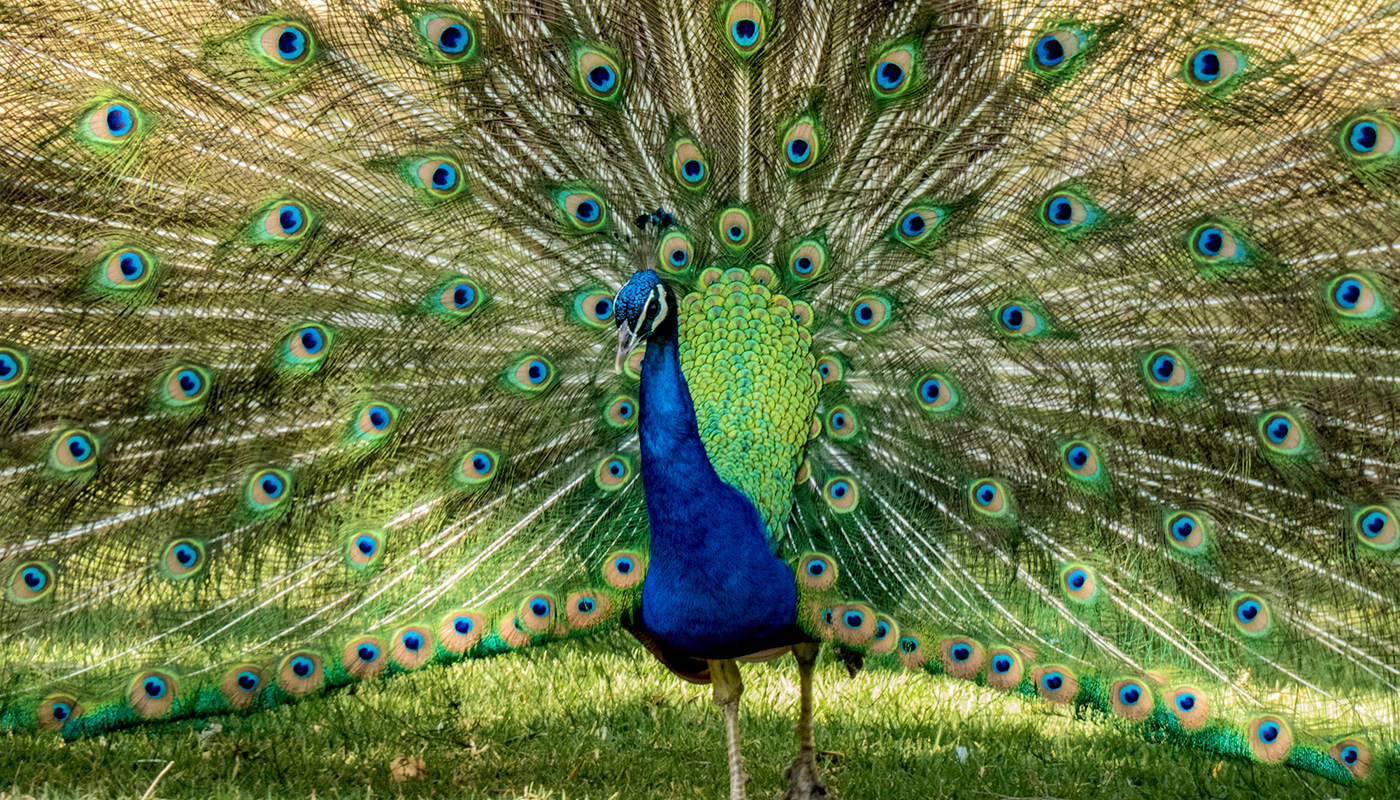
The last stop on our trip is Cuernavaca, south of Mexico City, in the state of Morelos. The Spanish named Cuernavaca ‘the city of the Eternal Spring’, due to its pleasant weather. We visit the largest floral garden in the world, Jardines de Mexico, next morning. A giant peacock structure ornamented with 3600 petunias,welcomes us to the 51-hectare property. Inside, there are seven themed areas ranging from the elegance of the Italian Renaissance to neat Japanese gardens, but with the emphasis on plants and flowers found across Mexico. We find cascading little waterfalls, prehistoric plants, a large display of rare cactus and trees from the Mexican jungle. There’s also a ‘Labyrinth of the Senses’, a maze containing nine striking, colourful sculptures.
There’s plenty to admire across the gardens, from pink orchids to hairy little cactus, as well as the spiky agave plants, like giant pineapples. It’s from the agave fruit that tequila, Mexico’s most famous export, is produced. But as anyone knows who visits the country (and especially the country’s gardens) finds, there’s a lot more to Mexico than tequila.
Andrea Moreno is a travel writer and photographer. Follow her @tripsandcolors
Tailor-made holidays
Flexible, custom-made holidays to Latin America created to match your exact requirements: our tailor-made itineraries are as unique as the clients for whom they are designed.
Design my tripPapagaio
Your edit for Latin American inspiration
Our exciting range of articles on Latin America explore everything from iconic destinations and lesser-known cultural gems to delicious traditional recipes. You’ll also find exclusive travel tips, first-hand client reviews and the chance to get your personal questions answered by our travel experts.
View Extraordinary Inspiration






































